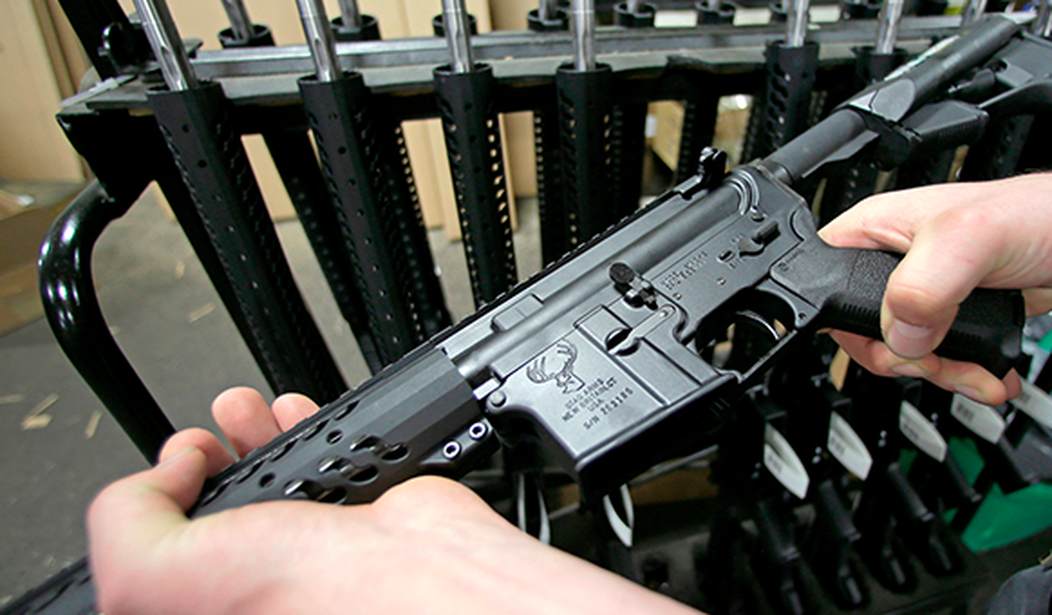Perspective matters, but it’s not difficult to have one’s perspective skewed horribly. All that needs to happen is to have something presented often enough as a massive issue of epic scale and you’ll likely believe it to be so absent anyone showing otherwise.
Take mass shootings, as an example.
Sure, they’re awful, but many like to pretend they’re the biggest threat to life we have. We simply need to upend our entire lives, forfeit our rights, and anything else demanded because if not, our kids are going to be gunned down.
Yet a report trying to pin mass shootings on gun proliferation actually shows just how minuscule the problem really is.
The carnage has taken 88 lives in 17 mass killings over 111 days. Each time, the killers wielded firearms. Only 2009 was marked by as many such tragedies in the same period of time.
Children at a Nashville grade school, gunned down on an ordinary Monday. Farmworkers in Northern California, sprayed with bullets over a workplace grudge. Dancers at a ballroom outside Los Angeles, massacred as they celebrated the Lunar New Year.
In just the last week, four partygoers were slain and 32 injured in Dadeville, Alabama, when bullets rained down on a Sweet 16 celebration. And a man just released from prison fatally shot four people, including his parents, in Bowdoin, Maine, before opening fire on motorists traveling a busy interstate highway.
“Nobody should be shocked,” said Fred Guttenberg, whose 14-year-old daughter, Jaime, was one of 17 people killed at a Parkland, Florida, high school in 2018. “I visit my daughter in a cemetery. Outrage doesn’t begin to describe how I feel.”
The Parkland victims are among the 2,842 people who have died in mass killings in the U.S. since 2006, according to a database maintained by The Associated Press and USA Today, in partnership with Northeastern University. It counts killings involving four or more fatalities, not including the perpetrator, the same standard as the FBI, and tracks a number of variables for each.
The bloodshed represents just a fraction of the fatal violence that occurs in the U.S. annually. Yet mass killings are happening with staggering frequency this year: an average of once every 6.53 days, according to an analysis of The AP/USA Today data.
Except, they’re not, for one thing.
Mother Jones, which isn’t exactly a pro-gun publication, has been tracking mass shootings for a while now. They use a similar definition to how most reasonable people define mass shootings: An incident in which three or more people are killed other than the shooter. How many do they have for 2023? Five.
- Monterey Bay, California
- Half Moon Bay, California
- Michigan State University
- Nashville, Tennessee
- Louisville, Kentucky
That’s it.
Now, that’s still an awful lot, but it’s a far cry from 17 mass shootings.
As for the total number of fatalities since 2006, well, that’s obviously suspect as well. Yet, for the sake of argument, let’s assume that’s right. If you simply call it 16 years–you can’t since they’re including homicides for this year in their total, but again, for the sake of argument–then that averages out to just a tad over 177 people killed in mass shootings per year.
Compare that to the more than 26,000 homicides annually, and it’s not exactly a high percentage.
And unlike them, I can provide sources for all my numbers.
Look, mass shootings suck. No one is claiming they don’t and no one is trying to say they shouldn’t be addressed.
Yet this constant push to infringe on people’s Second Amendment rights because of it is beyond insane, especially since more than 99 percent of the homicides aren’t associated with these mass shootings. They more typically involve stolen or otherwise illegally acquired firearms.
It’s time for people to knock this mess off, especially since it’s not like this is even uniquely American.








Join the conversation as a VIP Member